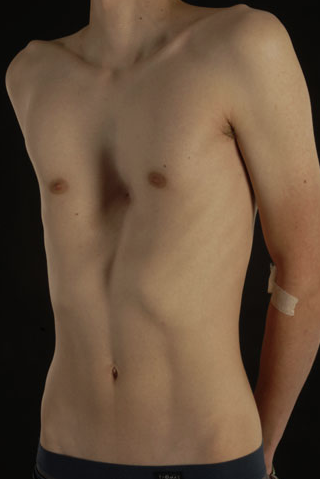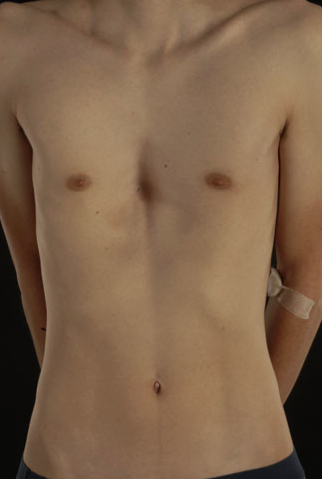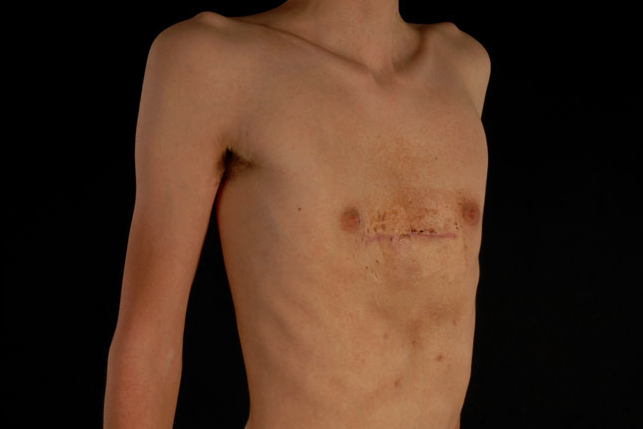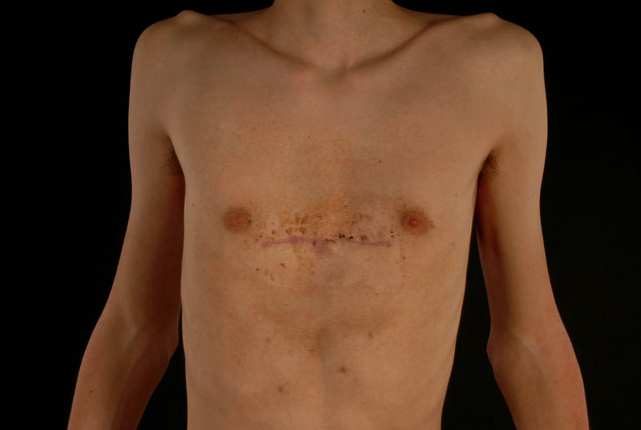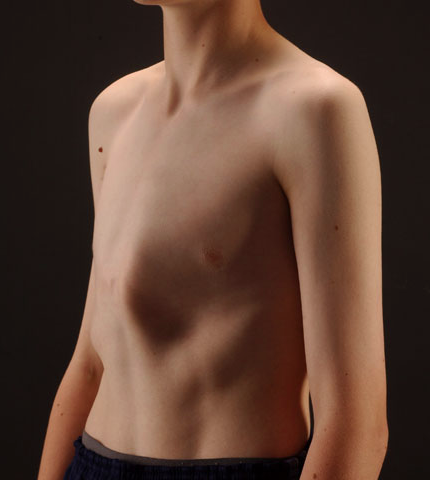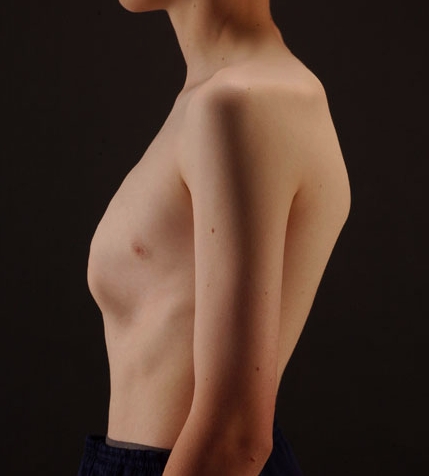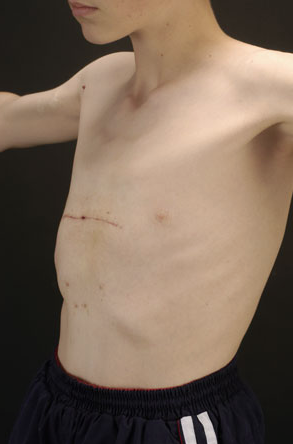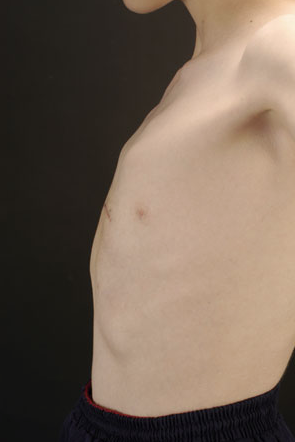Surgeries for Funnel Chest & Pigeon Chest are currently not funded by the NHS
Most people with funnel chest or pigeon chest accept and live happily with the shape of their chest. Some people may have problems such has chest pain or difficulty breathing during exercise, but most people don’t. There may be psychological effects such as low self-confidence or negative self-image.
- Surgery
A number of surgical techniques can be used, including the Nuss and Ravitch procedures, both are performed at Heartlands Hospital. Both procedures are performed under a general anaesthetic with you fully asleep.
The Ravitch procedure involves a cut on the front of the chest. The cartilages causing the different chest shape are cut away and the breastbone position changed (brought forward or pushed back). In some cases, a metal bar will be put in across the chest to hold the repair in place. More commonly we use the patient’s own muscles to provide the support. The Ravitch procedure may help correct a chest that is not symmetrical.
The cut on the front of the chest may be either horizontal or vertical. Small drains will be put in during the surgery to remove any fluid from around the site of the operation for the first few days.
The Nuss procedure relies on the flexibility of the chest. 2 small cuts are made on the side of the chest. A curved bar is put in to push the breastbone forwards. The bar then stays in place to support the new shape for 2 to 3 years before being removed in a second operation. Sometimes 2 bars are needed. The bar is put in under the skin and behind the breastbone. A small camera is used to guide the bar as is it put in the chest. The ‘u‘ shaped bar is flipped to an ‘n’ position to push the breastbone forward. No cartilage is removed or cut.
Non-surgical management includes:
- Physiotherapy for postural exercises
- Counselling
- Talking therapies
- Vacuum bell therapy
- Bracing
Only surgery and physiotherapy are available at Heartlands Hospital.
The Ravitch procedure allows the surgeon a good view of the chest. It also allows surgery to be done without a bar to support the repair. It is very unlikely that the condition will recur after a Ravitch procedure and this procedure can treat complex pectus conditions. The Ravitch procedure may help repair a chest which is not symmetrical.
The Nuss procedure is less invasive so the scars are smaller, there is also no need to cut or remove cartilage. A second operation is needed to remove the bar. If your chest is not symmetrical, it is likely to still not be symmetrical after surgery.
If you are suitable for surgery extra tests may be needed such as:
- Computerised Tomography (CT) Scan or Magnetic resonance Imaging (MRI). This is to assess the shape of the chest in detail and work out your Haller index.
- Electrocardiogram (ECG) and Echocardiogram. This is to check the function of the heart.
- Minor more common risks
It is possible to have a wound infection after any kind of surgery. A collapsed lung may happen, this is treated with a chest drain. A collection of fluid under the skin or around the lung can happen, again this may need to be drained. Some people heal better than others and the scars may become red and thickened in some people. After the Nuss procedure you will be able to feel the bar, this can feel uncomfortable for weeks or months.
- Major less common risks
You may not be happy with the results of surgery or the chest may start to go back to its original shape. Some bleeding happens but rarely a lot more bleeding can happen. If there is a lot of bleeding from the heart or major blood vessels during the Nuss procedure your surgeon may need to do a cut on the front of the chest through the breast bone to stop the bleeding. This is very rare. A blood transfusion may be needed if this happened. Occasionally after a Nuss procedure the bar may move, surgery may be needed to correct this.
You will be started on strong Pain control , which will be reduced as your pain improves. It is common to have an epidural for pain control after the Nuss procedure. The severe pain subsides after a few days but you can expect to have some discomfort for a few weeks after surgery.
- Chest drains removed
- Able to walk on your own and up stairs
- Pain is well controlled
- Bowels working
- Support from friends and family at home
Once you go home you will need to continue painkillers, these can be reduced as your pain improves. Never stop these suddenly, it will hurt. If you need more tablets your GP can prescribe these until you are able to stop. You can gradually return to activity, as you feel able. Some activities put particular strain on the operation site. The table below is to help guide you. It is normal to feel tired at first, this will improve.
Return to Activity Table
| Activity | Avoid For |
| Lying on side | 1 month |
| Driving | 2 to 3 months |
| Over twisting spine | 3 months |
| Pushing up with arms from chair | 3 months |
| Pushing / Pulling heavy doors | 3 months |
| Lifting weighted objects (e.g. heavy shopping / suitcase) | 3 months |
| Gentle exercise with arms involved (e.g jogging, cycling) | 3 months |
| Competitive Exercise / Activity (e.g. Athletics, Mountain Biking) | 6 – 12 months |
| Contact Sport / Competitive Sport (Football, Rugby, Tennis, Cricket) | 6 – 12 months |
| Heavy Weight lifting | 12 months |


